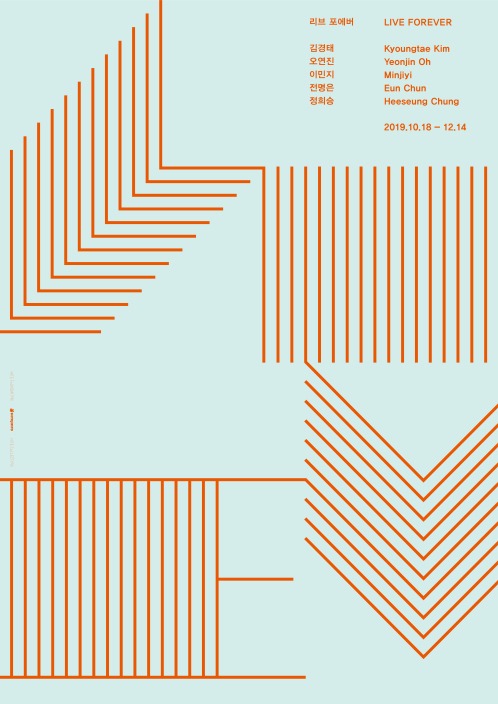
| Period| | 2019.10.18 - 2019.12.14 |
|---|---|
| Operating hours| | 11:00 - 18:00 |
| Space| | HITE collection/Seoul |
| Address| | 714, Yeongdong-daero, Gangnam-gu, Seoul, Republic of Korea |
| Closed| | Monday, Tuesday, Wednesday |
| Price| | Free |
| Phone| | 02-3219-0271 |
| Web site| | 홈페이지 바로가기 |
| Artist| |
김경태, 오연진, 이민지, 전명은, 정희승
|
정보수정요청



|
|
Exhibition Information
In the era of image overflow, Live Forever reconsiders photography as art practice and questions on the possibilities of its permanence. It has been less than two hundred years since photography first appeared in this world. Yet ever since, it’s been analyzed as an opposing medium of representation to painting from art historical perspective, as well as investigated through screen aesthetics or media theory from various angles. Subsequently, over the last 20–30 years since digital photography emerged, its aspect as data rather than a material-based property became more significant. Contemporary photography is in the state of being assumed as image and data along with painting, graphic and video, while spreading in light speed via social network platforms. In this turbulent status quo, photography either neglects those platforms and isolates itself or adheres to it to be swiped away––this dichotomy seems to be the destiny that photography is encountering nowadays. Can it win against the speed and perpetuate itself? What about photography as art? These questions marked the starting point of this exhibition. It is told that photography is innately anchored to death, since its object existed in the past. According to Roland Barthes, the idea of death is the essence of photography. However, Georges Didi-Huberman asserted that photography is a fragment of the real, an existence that is both absent and present.[2] Regardless of whether we see photography to enclose certain time in past, present or future, the pace recent photography barely ‘flashes’ into our sight is as rapid as light speed. Even the light, emitted from the dark took 1500 years to reach our globe, hits directly on the digital platforms to mingle into the chaos of mass data. Photography, arriving and passing in light speed, has no time to bear any aura that Walter Benjamin once attributed to earlier photography. In the early nineteenth century, before photography became industrialized, Benjamin pointed out the melancholic sentiment of aura, where the object, time and space intermingled in the photography of Hill, Hugo and Nadar.[3] Nonetheless, be it technology or art, the achievement of so-called progress will never turn back to the time when it didn’t exist yet. In this sense, they are irreversible, in the same way photography will never chose to return to the speed of the nineteenth century to regain its aura. At the same time, the perspective that photography takes the past and death as its premise doesn’t instantly indicate its own extinction. The concept and existence of photography also will be irreversible since the time it appeared to this world. That said, what would the turmoil of digital data as well as the developing speed of Internet and social network mean to the artists, especially to photographers, who are destined to create images? What will photography do, as it is added to this numb state oversaturated with images? The photographs by participating artists of Live Forever, Heeseung Chung, Eun Chun, Kyoungtae Kim, Minjiyi and Yeonjin Oh, create constantly certain frictional force controlled by their own speeds. Even though their motivations and focuses in photography differ, each continues photography in their own tempo by using it as a poetic language created from the space in-between the arrayed images; by capturing the photographic desire of portraying the objects beyond the visual perception, by challenging conventions of visual perception, by defining oneself as a photographic agent who drifts in time and space and by exploring the photochemical properties and the essence of the photographic medium through camera-less work. Thus, Live Forever confronts the artists’ works presented as physical existence occupying the exhibition space to consider whether a photograph’s speed and the frictional force that regulates this speed could lead photography to its continuation as art.
